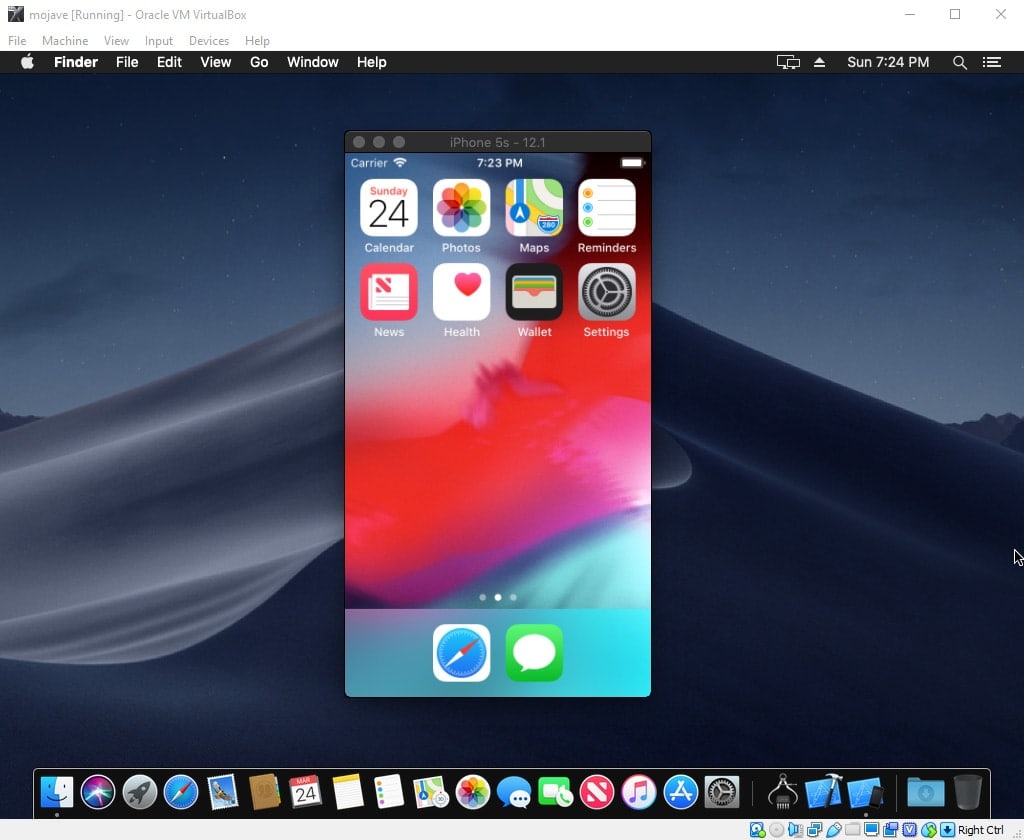

- Windows arm emulator virtualbox how to#
- Windows arm emulator virtualbox install#
- Windows arm emulator virtualbox windows 10#
- Windows arm emulator virtualbox pro#
Now for the fun part! Upon acquiring your Windows 10 ARM64 ISO, WIM, or ESD – we will convert it to an VHDX and attach it to the VM by using the Convert-Wim2VHD cmdlet from the WindowsImageTools PowerShell package. In order to power on the VM, run the Start-VM cmdlet.Īfter running the cmdlet, you can connect to the VM from the Remote Desktop Connection Manager.īy now, you should be excited that we made it this far. Once you've gone through the steps, you'll be ready to connect.

Windows arm emulator virtualbox how to#
There are a few things you'll run into upon attempting to connect for the first time, but luckily Erwin Bierens made a blog post that outlines how to get past the roadblocks. The VMId property of the Get-VM cmdlet above will be needed in order to connect to it from this app.
Windows arm emulator virtualbox install#
We need this program since the VMConnect application that opens an RDP connection to the VM also didn't install with the feature at the time of this post.Īssuming you've installed Remote Desktop Connection Manager, connecting to the virtual machine involves creating a remote desktop group, and adding a server with VM console connect enabled. How do we connect to the virtual machine? This is where the Remote Desktop Connection Manager comes in. Get-VM -Name "Win10ARM" | select Name, VMId, MemoryStartup, ProcessorCount To see information about your newly created VM, you can run the Get-VM cmdlet while passing the name of your VM into the Name parameter. New-VM -Name "Win10ARM" -MemoryStartupBytes 2GB –Switch "Default Switch" | Set-VMProcessor -Count 2 We're not going to need to attach a virtual hard drive yet, so we're going to skip it for now. We're going to create a VM named "Win10ARM" with 2GB RAM and 2 CPU. To create a Virtual Machine through PowerShell, the nifty New-VM cmdlet does the trick. Luckily, we can still utilize the Hyper-V PowerShell Cmdlets to do everything we would normally do from the GUI. Creating and Managing Virtual MachinesĪt the time of this post, the Hyper-V Management Console Snap-in doesn't install even though a shortcut in the Start Menu does. Before moving on to the next session, be sure to open up another elevated PowerShell process or else none of the commands will work. If the command is successful, you'll be prompted to restart. First thing to do is to load an elevated PowerShell process (Run as Administrator), then run the command to enable the Hyper-V feature.Įnable-WindowsOptionalFeature -Online -FeatureName Microsoft-Hyper-V –All There are at least three different ways to install Hyper-V, but we're going to focus on doing it through PowerShell since you'll be running commands for many things in this post. If you ask me, I'm going to point you back to this bullet-point). Windows 10 ARM64 installation media (I'm not providing this.I've tested this on build 19555, so I can't speak for any earlier builds.This will not work with the first-gen devices like those that contain a Snapdragon 835. A Windows 10 ARM64 device with an SoC that has the right capabilities to run WSL2.If you're ready to virtualize, then let's go! Prerequisites
Windows arm emulator virtualbox pro#
It's one of the main things that I've wanted to do since buying my Surface Pro X, since my ASUS NovaGo had an SoC that doesn't have the proper virtualization capabilities. It is totally possible to run virtual machines in Hyper-V from Windows 10 ARM64. There's one thing in this post that still does apply, regardless. Treat this guide as a way to do things from an alternative means. Edit: Windows 10 Insiders Build 19559 now fully supports Hyper-V and includes the management tools.


 0 kommentar(er)
0 kommentar(er)
